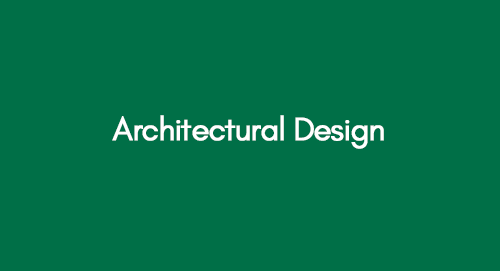
Healthcare Leadership
December 23, 2020
Managerial Economics
December 24, 2020Architectural design is like creating a plan for building a house or a building. It involves making drawings and choosing how it will look and work.
The following text comprises the study's introduction.
Chapter I- Introduction
The inception of digital technologies has transformed the very essence of modern Architecture radically changing the dynamics of building design, production and manufacturing functions while in parallel providing a platform for designers and Architects to explore innovative aesthetically appealing design formats and discover refined production concepts in construction engineering.
Explore a Deeper Understanding of Architectural Design Studies Here
This study attempts at revealing the emerging concepts and trends in digital technologies that are influencing modern-day techniques and contemporary architectural practices with an emphasis on the UK construction industry, further delving into the different ways in which these digital design concepts and technologies have changed the way buildings are constructed, designed and conceptualized.
Branko Kolarevic (2003) states in his study titled, " Architecture in the Digital Age – Design and Manufacturing" that there is a direct correlation and relationship between digital technologies and the design process that defines what can be conceived and produced thereby depicting and manifesting the prime importance of the information repository including aspects like production problems, management and control of information, communication and the application of this specific information in the building’s design and production process. This lucid relationship between production and conceptualization according to Kolarevic (2003) is further strengthened and reshaped through the augmentation and integration of digitally enhanced processes related to design, manufacturing, analytical modelling and building assembly.
Learn More About the Benefits of the Use of Digital Concepts in Design
In modern times, digital technologies are enabling the architects to take up a central role as diverse information managers and controllers exploiting the benefits offered by a digitally sparked collaborative environment built up through the seamless integration of professional functional areas such as architecture, construction and engineering design. The benefits of the use of digital concepts, procedures and techniques in contemporary Architectural practices for design and production have expanded beyond the ability to incorporate complex curving forms to produce significant construction details and specifications regarding buildings directly from the design process. These cutting-edge digital technologies and techniques are paving the way for ingenuity and innovative conceptual frameworks in building designs and production.
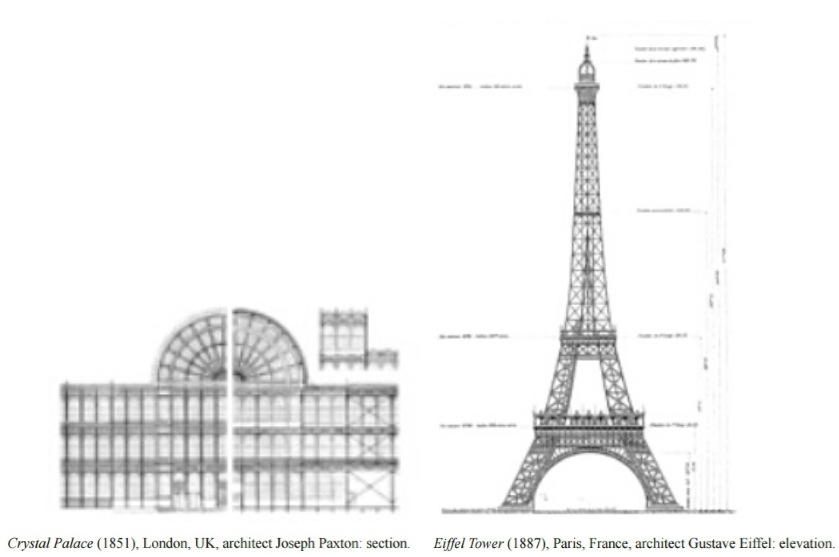
Figure 1: Traditional Architectural Designs (Kolarevic, 2003)
One of the key designs depicting a bold, brazen and aesthetically pleasing aura is reflected by Joseph Paxton’s Crystal Palace, which is symbolic of the technological advancements marked by the industrial revolution emphasizing the futuristic growth of glass and steel structures in modern construction. The Eiffel Tower in Paris by Gustave reflects the construction technology's capabilities that spark skyscrapers' design and tall buildings. These skyscrapers were seen soaring to new heights ten decades later with gleaming glass and steel structures finding immense popularity in terms of unique construction designs and effective production values. One of the best examples of modern-day architecture symbolizing digital architectural practices is Bilbao's Guggenheim Museum built by Frank Gehry which reflects the essence of the digital information transformation that has revolutionized the construction industry. Hence, as highlighted by Branko Kolarevic (2003), the digital information age is redefining how buildings are designed, manufactured and built and the effects of these digitally-driven changes are at-par with those reflected by the industrial revolution.
The use of digital technologies in contemporary architectural practices are reflecting capabilities that were perceived and projected by experts years ago. Practices such as topological digital architectures, kinetic and dynamic systems, genetically engineered algorithms, computational models and non-Euclidean geometric space techniques have led to the diversification of the conceptualization sphere. The use of three and four-dimensional structures and their productive transformation through the implementation of digitally enhanced design processes marked by flexibility and creativity have led to innovative concepts in building designs and effectiveness in the production costs and management of such structures. Techniques like digital media, CAD, CAM, parametric models and BIM have further revolutionized the way buildings are designed and constructed especially in the UK. (Paul Seletsky, 2005)
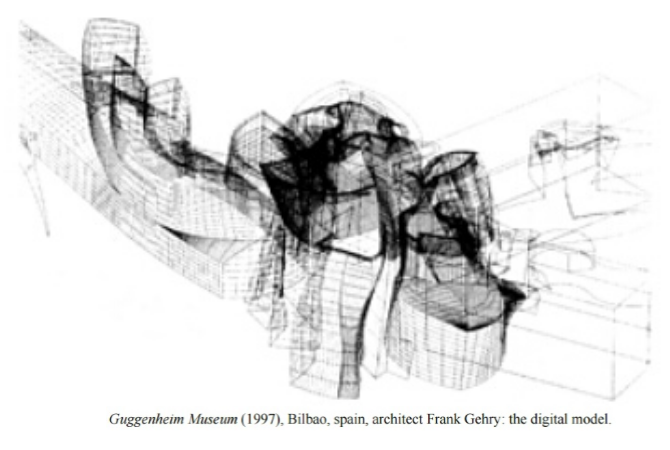
Figure 2: Frank Gehry - Digital Designs (Kolarevic, 2003)
Research Aim and Objectives
This research aims to evaluate and assess the impact and influence of the use of digital technologies in contemporary architectural practices in the UK construction industry. The aim also veers toward the benefits and advantages that these digital design techniques have introduced to the construction industry including the way buildings are now designed and constructed.
The primary objectives of the proposed research include:
- To review relevant literature related to the use of digital technologies for architectural designs with a focus on the feasibility of such techniques.
- To provide qualitative evidence through examples and practices relevant to large infrastructure projects in the UK industry and across the globe and their impact to supplement the arguments.
- To study the different types of digital technologies and their underlying dynamics in revolutionizing the construction practices in the modern age.
- To evaluate through research techniques, how the use of these digitally-driven changes in contemporary architectural practices has changed the way buildings are conceived, produced and constructed
- To evaluate the various changes brought to the production and management procedures of construction projects through the adoption of digital technologies.
- To recommend and provide arguments in favour of digital architectural techniques such as Parametric Modelling and Business Information Modelling.
Research Question
The above-mentioned aim and objectives can hence be addressed through the following research question or topic:
How is recent digital technological development such as BIM and Parametrics design processes changing the way construction projects are developed/managed and buildings are designed, conceived and produced in the UK?
The solution and arguments relevant to the above research query will be highlighted through recommendations and analytical reasoning in the form of information and knowledge found relevant and important in this researched argumentative analysis.
Chapter II- Literature Review
This section outlines the case studies and the previously completed literature reviewed to achieve a thorough understanding of the trends revealed by the adoption of recent digital technologies in contemporary building designs and production practices. Branko Kolarevic (2003), explains how these digitally enhanced practices are redefining designs and giving rise to inexpensive production procedures. Technological advancements in computer-aided design (CAD) and computer-aided manufacturing (CAM) practices have sparked beneficial possibilities in architectural designs allowing for complex architectural forms and diverse designs to be created that would otherwise be difficult and expensive to pursue through conventional construction procedures.
The digital technologies in modern-day construction design and production generate a diverse digital continuum or a bridge as per Kolarevic (2003) that defines the relationship between design and production since innovative design concepts and methods for fabrication, construction and conceptualization that are digitally engineered are refining conventional methods of building production and construction including the relationship between constructive practices and Architectural designs. Various philosophers and theorists have influenced digitally driven architectural designs and practices in contemporary architectural methodologies. These include German mathematician, philosopher and logician Gottfried Wilhelm Leibniz (1646–1716) and Gilles Deleuze (1925–1995). Further, techniques like BIM and Parametric Models have transformed the way architectural designs are conceived.
Kolarevic (2003) in his study, Architecture in the Digital Age – Design and Manufacturing, provides arguments that strongly recommend the application of these digital technologies for creativity and efficiency in the building design and production process. The revolution brought forward through the inception of digital techniques has sparked new forms of architectural creations in the form of digital structures. These reflect curvilinear forms and highly diversified geometrical models that are now being mapped to the contemporary design practices for buildings construction. In the UK construction industry, the adoption of these digitally driven design and production processes has now given rise to innovative designs and cost-effective manufacturing and production processes. Techniques like Business Information Modeling or BMI have further enabled the organizations in the UK to effectively manage the execution of these complex construction projects.
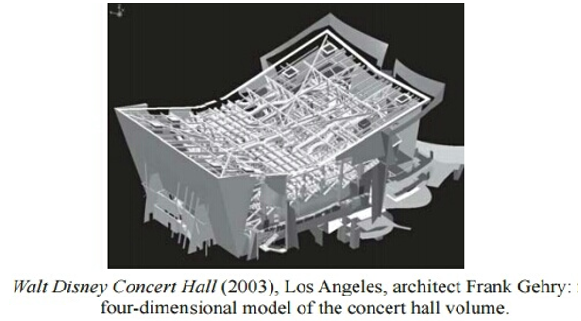
Figure 3: Four-Dimensional Model (Kolarevic, 2003)
In contemporary designs related to architectural plans and drawings, architects are usually inspired by the cognitive aesthetics and creative imagination projected by various theorists and philosophers. The application of digital technologies has further made possible the generation of these complex designs that accurately define the designer's intent. Inspiration for such innovative geometrical models has stemmed from various French and German theorists from the twentieth century. An example is the Mile Plateaux, as described by Gilles Deleuze as a series of a thousand plateaus providing a platform of numerous dimensions through which many geometrical models can be created primarily in a non-linear format which technical challenges the conventional methods of design that revolves around the linear concepts of the design of the building. Branko (2003) argues that the digital concept allows for a nonlinear design structure where event and reality are not placed through a connected linear pattern or continuous threads.
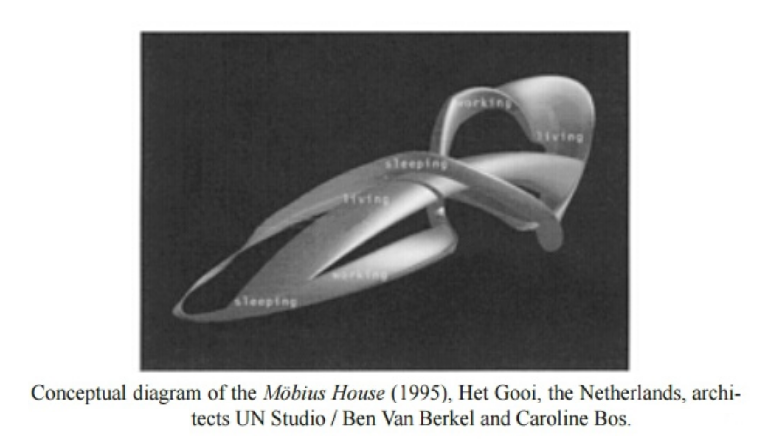
Figure 4: Mobius House- Conceptual Model (Kolarevic, 2003)
Folding Technique
These digital design concepts have in the last few years been adopted by professional designers and architects in contemporary and current architectural design practices to bring ingenuity and productivity to the construction design and manufacturing phases. Greg Lynn (1993) in his study titled, Architectural Curvilinearity has provided arguments that reveal the transition and transformation from the conventional de-constructivism design theory that projects the conflicting and contradictory logic to the contemporary flexible design logic that portrays connectivity and interconnectedness. This transformation has been brought about as a direct consequence of the application of digital trends in contemporary architectural practices. One of the interactive design strategies as described by Lynn (1993) is the 'Folding' technique that marks this digital concept of fluid interconnectivity and derails from the conventional design trends exhibited by the Cartesian Space as depicted in the Euclidean geometry of discrete volumes. The Folding technique makes use of the topological geometrical firms and the design concepts manifested by the continuous curvature models and surfaces as depicted by the Rubber-sheet geometrical forms.
Gilles Deleuze's study further reveals the trends and concepts related to the Folding Technique and related concepts like affiliation, pliancy, multiplicity, striated space and affiliation. This is further explained by Gille's work the Fold in which he described the particular design technique in detail delving into the fibre spatial constructs and its mapping onto the construction structure's interior and exterior introducing transitional spaces between them and introducing smooth surfaces and digital patterns in building design. Deleuze defines the Folding form as a strong and bold aesthetically rich form that is composed through a digital amalgamation of folds, fissures, platforms, surfaces, infills and depths that reflect various aspects of the built space specifically the spatial niche. The distinctive characteristics of the folding technique allow for the unique concepts in the aesthetics and utilization related to the built environment.
The digital concepts of architectural practices also reflect techniques that enable the generation of smooth structures primarily through the use of digital media techniques that significantly challenge the conventional methods of building design.
Smooth Architectures
A high-level aesthetic concept made possible through the application of digitally enhanced architectural practices is the generation of smooth surfaces or hypersurface forms. This although a complex design concept, considerably challenges architects in the realm of design and construction as the particular design concept named by Stephen Parrella is thoroughly complex and questions the intellect or aesthetical reasoning of the designer who is well versed in the technicalities of professional concepts such as the Euclidean Geometry. However, in deeper retrospect, the concept of smooth surfaces enables the creation of a broader design canvass that extends beyond the parameters of aesthetics sparked through traditional design and architectural practices.
The application of digital techniques like three-dimensional modelling and four-dimensional animated structures have transformed the conventional methods of architectural practices bringing radical changes in the design and production process extending the discovery horizon to new boundaries. The digital trends like key shape animations, dynamic systems, genetics, curvilinear forms and shapes, topological geometry, isomorphic surfaces and parametric models amongst other techniques are bringing productive changes to the way buildings are designed, produced and constructed in the current age. The primary advantage lies in the ability to create highly complex and innovative designs in economical budgets through digitally refined design concepts and by bringing efficiency in the design and production process through the application of technologies like Business Information Modelling or BIM that enables effective management of construction projects allowing for smooth execution and delivery within defined costs and schedule (Kolarevic, 2003).
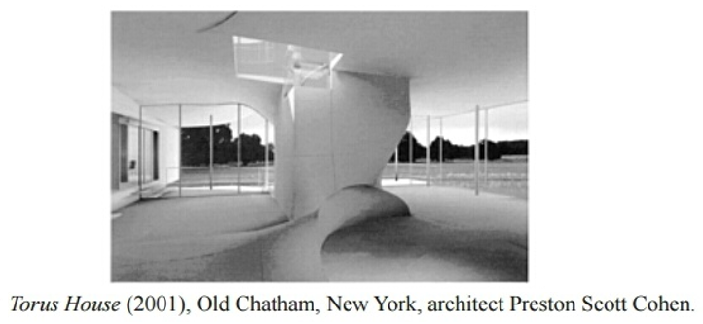
The impact of the application of these digital technologies in contemporary architectural practices can be ascertained from the fact that the digital revolution has now made it easier and more effective to create, exchange and communicate complex designs through faster and more dynamic real-time information processing. The design information can then rapidly be converted into construction information allowing for efficiency in construction project delivery and enhanced productivity through the use of digital techniques.
The worldwide adoption of these digital technologies for construction design and production has increased over the years with significant advances being made in terms of the evolution of the digital information age. In the UK industry, organizations have made use of these technologies that have redefined how products are conceptualized and manufactured with the utility extending beyond building design to automobiles, ships, aeroplanes and other appliances. Trends veer towards the conceiving, manufacturing, testing and refining of these products through the use of digital practices. The benefits and advancement opportunities projected by these digital technologies like CAD and CAM have had a significant impact on the AEC, Architectural, Engineering and Construction industries.
The digitally driven changes are marked by the use of digital media in contemporary or modern-day building design procedures. It is considered a powerful generative aid that extends beyond a mere application for defining visual aesthetics toward a tool that is productive enough to facilitate the production of diverse geometrical forms and their relative transformation. The particular process termed digital morphogenesis sparks the production of designs that largely deviate from the typical patterns and linear structuring represented by conventional methods to generative digital computational models that project contemporary aesthetical patterns and contemporaneity that relates to the architect's philosophy and creative intent. The use of this digital application enables the designer to select from a range of possible geometric forms or building models provided by the digital tool for further design refinement related to a building. These design options are provided to the architect based on the generative internal design logic provided to the tool as input. These digital applications thus tend to enhance productivity and increase design process efficiency.
Parametric Models
Parametric Modeling is a productive digital concept related to architectural design that allows a diaspora of possibilities by enabling the architect or the designer to create an unlimited number of similar things or objects through the use of parameters. Using the concept of multiplicity, a range of objects can be generated and geometric representations and forms based on an earlier designed repository of relational or operative dependencies of variable dimensions can be produced. Using this technique particular objects or specific instances can be created by setting the variable’s unique value. The emphasis is on setting the parameters or values of the variables that define the design and not exactly the shape.
A range of objects or instances can thus be created by assigning or declaring variable values for the different variables or parameters. A relative geometric representation or equation can thus be defined that represents the association or relationship between the objects or configurations. This association between objects can then facilitate the definition of interdependencies between objects and the behavioural exhibition of objects relative to transformations. The paracube model by Marcos Novak is an example of architectural design generated through the parametric modelling technique. In his particular algorithmic explorations of “tectonic production”, Marcos Novak through the use of mathematical software produced geometric models and procedural flows that are defined through many variables called slots, generally not associated with pragmatic aspects that can undergo static or dynamic mapping with an external impact.
Therefore, parametric modelling allows for a highly refined and complex design through a hierarchy of associated instances modelled parametrically to generate robust and interactive designs. It also enables refinement of the design in iterations through all phases of the construction project including design, production and construction.
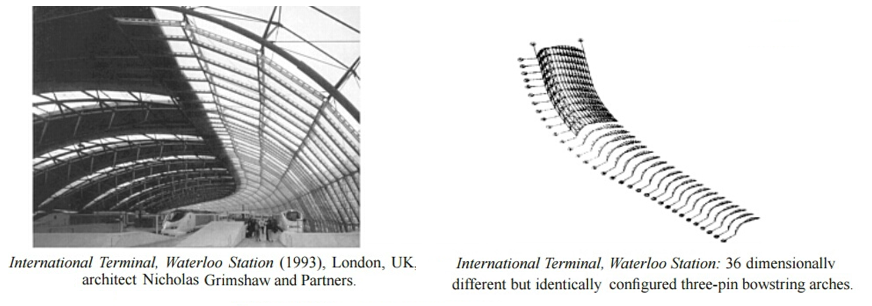
Business Information Modelling
Business Information Modeling or BIM is a high-level digital design technique and integrated practice that provides a powerful framework to transform the conventional methodologies of architectural conceptualization and building designs by introducing digitally enhanced concepts for visual communication, representation and conceptual designs. The technique provides numerous benefits and opportunities to the architect for generating innovative and refined complex geometric representations and architectural forms. It makes use of the virtual building model simulation functionality and capability to produce architectural models and communicate interactive designs. The technique enables architects to explore design opportunities beyond the traditional two-dimensional structures to include geometric projections and virtual building design simulations that are digitally enhanced.
The digital building designs through the BIM enable the designer and architect to generate innovative concepts and geometrical models related to the model's plans, sections and elevations of buildings (Guidera, 2006). Building Information Modeling technique, through the use of simulation sparked by an intelligent, data-driven and object-oriented integration of virtual reality, enables the generation and production of innovative and productive building models and designs. The technical essence of this digital technology has the power to transform the output and production values of contemporary architectural practices. Business Information Modeling or BIM allows the smooth transition from traditional and conventional methods of representative designs like drawings towards digitally driven simulations and models including three-dimensional designs that depict the architect's aesthetics and architectural intent in a more lucid and deeper manner. The technique also enables production and construction process efficiency by optimizing costs and allowing for effective management of the construction projects from the conceptualization to the final development stage.
Chapter III-Methodology of Research
The methodology of this research is tailored while considering the analytical techniques as well as descriptive methods presently available for this research. The research will primarily include assimilation and evaluation of secondary data through literature review and analysis of practical applications and examples to gather valuable quantitative and/or qualitative information in order to supplement the arguments presented and provide considerable evidence to support the researched topic. The literature review will entail the analysis of practical implementations and examples available through related websites, business critiques or reviews, journal articles, industry reports and academic publications. secondary data in the form of technology applications by organizations in the construction industry that have published this information will be collected for the analysis of related arguments and supplemental information will be further reviewed to collect the necessary information to further substantiate the highlighted topic. The aim is to gather and evaluate all relevant information available through online and in other resources to provide valuable evidence and data in favour of the researched topic.
- The detailed information related to the types of digital technologies available for architectural practices and how they have evolved over the years.
- The changes in the conventional methods of building design, production and construction as a result of the information age.
- Impact and influence of the digitally driven changes on contemporary architectural practices and techniques.
- The particular impact of digital architectural techniques on the design and production process in construction projects.
- The project information related to the UK construction industry reflects the use of these digital technologies in architecture.
- The specific details related to how the UK construction industry has adopted the use and application of modern-day digital technologies in construction design.
- The particular information related to the application of technologies like Business Information Modeling and Parametric Models with an emphasis on practical examples years reflected by construction and design firms in the UK.
Chapter IV- Research Findings and Discussion of Research
This section explains in detail the quantitative and qualitative analytical description produced through a comprehensive secondary research methodology and data analysis techniques. Further, the arguments supported through refined assessment tools like case studies and literature review are presented in this section that reveals the research findings along with the comparative analysis conducted through the reviewed literature.
As per the research studies, digital technologies that have been applied in organizations and the business environment have redefined the particular roles and professional responsibilities of designers and architects. Construction design and production environments involve a dynamic and highly interactive project environment with challenging scenarios that require them to adapt to the diverse functionalities offered by these sophisticated digital technologies. Penttila and Elger,(2008), further explain the benefits arising from the use of such technologies in contemporary practices that facilitate information and knowledge flow controlling it across barriers where required.
Digital Technologies Application in Contemporary Architectural Practices in the UK
In digital architectural practice, with specific regard to construction and engineering disciplines, the use of boundary objects or entities is highlighted that enable effective and interactive collaboration between concerned affiliations. The use and application of hybrid methodologies such as the combination of digital techniques and physical media have further refined the way construction projects are designed, constructed and managed. In the UK, the construction industry has widely adopted the use of digital technologies for architectural practices and the built environment. Architectural practices have been an established design profession in the UK since the nineteenth century with many built structures depicting the aesthetics and philosophies of well-known theorists and philosophers. The British Standard Institution Glossary (1993) states that an Architect is a professional who creates building design and further directs the specific development of the buildings. The use of digital technologies further expands this role enabling the designer to explore new design domains and arenas as they have a significant role to play in the design and development phase associated with an interesting project or business delivery (Suha Jaradat, 2012).
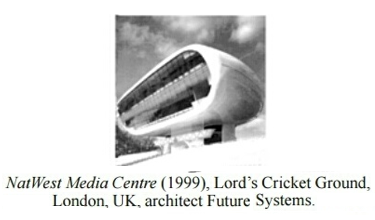
Figure 7: Digital Designs in the UK (Kolarevic, 2003)
The UK Government is particularly investing in the Construction sector as the growing trends reflect the respective sector to be a major contributor to the economy. The dynamically progressive sector with its various sub-domains contributed an economic output of £107 billion, that is, £69 billion GVA to the UK economy as per 2010 statistics. It also provides jobs to approximately 2.5 million employees adding significant value to the Employment sector and the overall UK growth with prime contributions to facilitating the achievement of Climate Change objectives defined by the government. Studies reveal that particular services associated with the engineering, architecture and construction domains significantly add value to the UK economy and the government is taking a keen interest in construction endeavours related to low-carbon built environment programs. Architecture is an established profession in the UK being classified as the parent functional area of the design portfolio and with the advent of digital concepts in architectural practices, the designer's role and the design profession are becoming more diverse. (HM Government, 2012).
Such technology-driven efforts and development programs encourage the use of digital technologies to provide a platform for increased opportunities for challenging initiatives in the built environment with an awareness of the environmental impact and sustainable economic development. Statistics reveal that around 30% of the construction industry's output is purchased by industrial organizations and other entities also contributing to refining and developing national infrastructure. The UK government realizing the growth potential and economic contribution is establishing new programs and policies for the development of the sector with a focus on the application of digital technologies and hybrid practices that add value to building design processes and the built environment. Efforts such as integrating the domestic construction sector with BIM applications and public funding for projects that make use of digital Architectural practices will further substantiate the growth of the UK Construction sector.
Application of BIM Techniques in the UK
Building Information Modelling (BIM) is a high-level digital technology that facilitates the management and interactive collaboration of construction projects about the design, production and development of construction projects. Asset management and design is a significant feature of the BIM technique that makes use of three-dimensional computer models that regulate information flow throughout the life-cycle of construction projects. The application of BIM techniques has brought radical changes in contemporary architectural practices reforming ICT platforms and the design practices in the UK industry with more nations harbouring insightful awareness related to the advantages of the application of such techniques in terms of cost-effective design solutions with an emphasis on environmental impact.
Organizations are keenly adopting the use of BIM and implementing practices to build on this capability and develop it further. BIM application bridges the benefits available through cutting-edge software applications and efficient construction practices. It is being effectively used for the management and design of new built structures and refurbishment projects with procedures rapid energy analysis. However, the application of BIM is still an evolving technology that constitutes opportunities and risks with further evolution into functional refinements that will address limitations and inherent risks. The use in contemporary practices for project design and construction redefines and expands the roles and collaboration of designers and project stakeholders enabling cost and schedule efficiency with minimal chances of overruns.
The UK program for the development and growth of BIM known as the BIS-BIM strategy initiated in July 2011 is the most refined and technically advanced initiative undertaken to further research the beneficial prospects of digital technology in the domestic environment in the UK along with the opportunity to achieve a regional competitive edge in the application of BIM for construction projects. The program specifically focuses on the facilitation and encouragement of BIM application along with further research and standards establishment for its use. The investment into the growth of the technology will provide a platform for existing and prospective designers, contractors and architects to develop their skillset and utilize growth opportunities provided by the international platform to obtain increased work leading to raised employment levels. The diverse and advanced development program in the UK aims at taking BIM application to a higher level bringing diversity to the design and production processes.
Parametric Modeling and its application in the UK
Digital Modeling has now become the essence of architectural designs with Architects reaping the benefits of parametric designs that enable the creation of innovative 3-D models through the use of generative algorithms that enable productive design delivery. Parametric Modeling is being increasingly adopted by organizations in the UK to enhance construction project delivery and achieve cost-effectiveness. The particular application of the digital concept also enables flexibility in terms of team collaboration and efficient information flow in building design and construction.
Chapter V- Conclusions
Based on the analytical data collected and obtained through secondary research practices, this section reveals the recommendations and the deduced conclusion and key recommendations based on the research query and topic. This section also highlights and discusses the future challenges of the topic under discussion with emphasis on the difficulties and prospective limitations of evolving technologies and innovative solutions in the coming age.
Studies and research aimed at deciphering the positive implications of the particular use of digital technologies in architectural practices. Digital techniques have refined the way construction projects are now designed, excited and managed. The digital concepts in building design have also expanded the role and responsibilities of the designer and architect providing them with challenging opportunities to deliver creative and innovative geometrical models. Case studies have revealed the existing and potential benefits of these digital applications in terms of cost-effectiveness, efficient asset management and interactive collaboration in project environments. The UK construction industry has specifically adopted the use of these digital trends in contemporary architectural practices with an emphasis on the use of specialized technologies like Parametrics and Business Information Modeling (BIM).
The UK government has invested in the Construction Industry with specific regard to the BIM program to expand its use across local and global horizons looking forward to reaping the business benefits it entails. An investors report on the UK BIM program has further revealed that the adoption of this technique by the construction industry in the UK has resulted in the initial approximate savings of £2 billion to the industry and its clients. The UK government plans to achieve its development goals of bringing 15-20% cost savings on capital projects as a result of this BIM program. The local government plans to develop the BIM program further in collaboration with BIS and Construction Industry Council (CIC) to encourage its use across public construction projects further refining the technical know-how in lean development and ‘design for manufacture and assembly (DFMA) environments (HM Government, 2012).
The efforts and objectives of the UK government to further facilitate the use of these digital techniques focus on the following aspects:
- To encourage the use of digital design concepts and the application of sophisticated ICT and management systems to minimize operational expenditure and manage construction projects with enhanced efficiency in terms of operations and delivery.
- To achieve flexibility and efficiency in terms of supply chain departments and to enable successful collaboration between architects, clients and other stakeholders.
- To facilitate efficient asset management and achieve a leadership position in terms of cutting-edge architectural practices on a global level through further research and development in the construction industry.
The government endeavours to develop the construction sector through the encouragement of these specific technologies have raised the bar of process and project efficiency in the construction environment with industries rapidly adopting these digital concepts including BIM with the UK achieving an international repute as a leader in BIM application and research. The investment and use of the techniques have led to positive impacts on the UK economy and further investments aimed at its development will lead to an increasing platform for growth opportunities in the UK construction industry. The growing trend to integrate the digital techniques in architectural practices used in current tines has added significant benefits to construction project delivery including the development of the designer's roles.
However, the application of these digital concepts has also posed challenging complexities for the architect that need to be further explored. How far would these influence the construction industry would be manifested through future implementation and further enhancements to the technology
References
Angélil, Marc, 2004. Inchoate. An Experiment in Architectural Education. Barcelona: Actar Press. 24-31.
Aline, Saarinen (ed.)., Eero Saarinen on His Work, New Haven: Yale University Press, 1968.
Business Information Modeling, 2012, Industrial strategy: government and industry in partnership, HM Government, 2012.
Branko, Kolarevik., 2003, ARCHITECTURE IN THE DIGITAL AGE, 2003. Available at: <https://www.google.com.pk/url?sa=t&source=web&rct=j&url=http://samples.sainsburysebooks.co.uk/9781134470440_sample_535112.pdf/>. Accessed [21 December 2015]
Clayton, M.J., 2006. Replacing the 1950’s Curriculum. In: G.A. Luhan, P. Anzalone, et. al. 2006.Synthetic Landscapes – ACADIA 2006 Conference Proceedings. Mansfield: The Association for Computer-Aided Design in Architecture. 48-52.
Cheng, Renée., 2006. Suggestions for an Integrative Education. In: M. Broshar, N. Strong, and D.S. Friedman 2006. American Institute of Architects: Report on Integrated Practice. Washington DC: The American Institute of Architects. Section 5, 1-10.
Friedman, Daniel S., 2006. Architectural Education and Practice on the Verge. In: M. Broshar, N. Strong, and D.S. Friedman 2006. American Institute of Architects: Report on Integrated Practice. Washington DC: The American Institute of Architects. Section 0, 3-7.
Gilles, Deleuze., A Thousand Plateaus: Capitalism and Schizophrenia, Minneapolis: University of Minnesota Press, 1987.
Greg, Lynn., “Architectural Curvilinearity: The Folded, the Pliant and the Supple” in Greg Lynn(ed.), AD Profile 102: Folding in Architecture. London: Academy Editions, 1993, pp. 8–15.
Gilles, Deleuze.,The Fold: Leibniz and the Baroque, Minneapolis: University of Minnesota Press,1992.
Guidera, S.G., 2006. BIM applications in Design Studio. In: G.A. Luhan, P. Anzalone, et. al. 2006.
Holtzman, Steven R., 1994. Digital Mantras. The Languages of Abstract and Virtual Worlds. Cambridge: The MIT Press.
Ibrahim, M., Krawczyk, R., Schipporeit, G., 2004. eCAADe 2004: Two Approaches to BIM: A Comparative Study. In: K. KLINGER, ed. ACADIA22, The Association for Computer Aided Design in Architecture, 173-177.
Ignasi, de Sola Morales., Differences: Topographies of Contemporary Architecture. Cambridge:MIT Press, 1997.
Journal of Management in Engineering 18: 173–178. Baloi, D.; Price, A.D.F. 2003. Modeling global risk factors affecting construction cost performance, International.
Kolarevic, Branko., 2003. Architecture in the Digital Age – Design and Manufacturing. New York: Spoon Press. 3-10.
McCullough, M., 1996. Abstracting Craft – The Practiced Digital Hand Cambridge: The MIT Press. 59-81.
Martinez, B., and Block, J., 1988. Visual Forces. An Introduction to Design. Englewood Cliffs: Prentice Hall. 105-116.
Mayne, Thom., 2006. Change or Perish. In: M. Broshar, N. Strong, and D.S. Friedman 2006. American Institute of Architects: Report on Integrated Practice. Washington DC: The American Institute of Architects. Section 1, 1-11.
Peter, Zellner., “Ruminations on the Perfidious Enchantments of a Soft, Digital Architecture, or:How I Learned To Stop Worrying And Love The Blob” in Peter C. Schmal (ed.), Digital, Real:Blobmeister First Built Projects. Basel: Birkhauser, 2001.
Peter, Zellner., Hybrid Space: New Forms in Digital Architecture, New York: Rizzoli, 1999.
Pérez-Gómez, Alberto, and Pelletier, Louise., 1997. Architectural Representation and the Perspective Hinge. Cambridge: The MIT Press. 2-87.
Reyner, Banham., Theory and Design in the First Machine Age, 2nd edition. Cambridge: MIT Press, 1980.
Rafael, Moneo., “The Thing Called Architecture” in Cynthia Davidson (ed.), Anything. New York:Anyone Corporation, 2001, pp. 120–123.
Stavric, M., Marina, O., 2012, Parametric Modeling for Advanced Architecture, INTERNATIONAL JOURNAL OF APPLIED MATHEMATICS AND INFORMATICS, 2012.
Stephen, Perrella (ed.)., AD Profile 133: Hypersurface Architecture. London: Academy Editions,1998.
Strong, Norman., 2006. Introduction. In: M. Broshar, N. Strong, and D.S. Friedman 2006. American Institute of Architects: Report on Integrated Practice. Washington DC: The American Institute of Architects. Section 0, 1-2.
Synthetic Landscapes – ACADIA 2006 Conference Proceedings. Mansfi eld: The Association for Computer-Aided Design in Architecture. 213-227.
Seletsky, Paul., 2005. Digital Design and the Age of Building Simulation. AECbytes [online], Viewpoint #19. Available from: <http://www.aecbytes.com/viewpoint/issue_19.htm/>. Accessed [21 December 2015].
White, John., 1958. The Birth and Rebirth of Pictorial Space. New York: Thomas Yoseloff. 112-134.
Zigo, Tomislav., 2005. Beyond BIM. The Hidden Potential of the Cumulative Knowledge Factor. Hagerman & Company, Inc. Technology Bulletin [online], 34 (AEC2). Available from: <http://newsletters.hagerman.com/newsletters/ebul34-AEC2.htm/> . Accessed [21 December 2015].
Get 3+ Free Dissertation Topics within 24 hours?

















